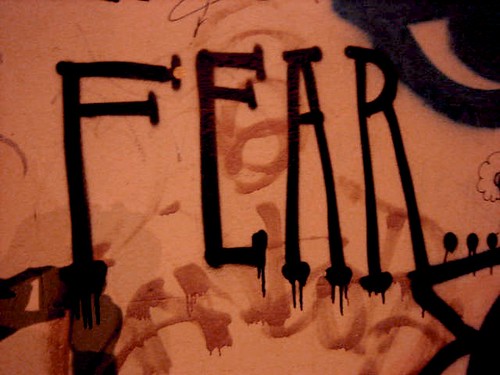The name Leonardo da Vinci resonates through the corridors of time, embodying the essence of the Renaissance. Born in the Italian town of Vinci in 1452, he quickly transcended his humble origins and became a quintessential ‘Renaissance man.’ Da Vinci was not only an outstanding painter; he was a polymath who demonstrated his talents in multiple disciplines such as art, science, engineering, and anatomy. His most famous works, such as the iconic Mona Lisa and the profound Last Supper, showcase an artist at the pinnacle of creativity. However, beneath his appearance as an artistic genius lay an insatiable curiosity and thirst for knowledge, which propelled him into the fields of science and invention.
Leonardo da Vinci’s Scientific Pursuits and Inventions
His obsession with nature led him to explore anatomy, fluid mechanics, and the complexity of mechanics. Leonardo’s notebooks reveal a mind that constantly observed, recorded, and questioned the surrounding phenomena. He famously said, ‘The greatest deception men suffer is from their own opinions,’ reflecting his belief that observation and experience are more important than mere speculation. The Vitruvian Man is one of his most famous sketches, embodying this concept by integrating art and science into a unique study of human proportions.
Despite Da Vinci’s prolific genius, his scientific pursuits were largely overlooked during his time. He lacked formal education and often took notes using mirrored text, which increased the ambiguity of his scientific observations. However, his keen insight and advanced inventions fully demonstrated his understanding of the world. From conceptualizing the first diving suit to designing armored vehicles, Leonardo’s inventions were often revolutionary, although impractical for that era.
His engineering talent extended to concepts that emerged centuries later, such as airplanes and machine guns. His sketches of aircraft driven by bird research demonstrate his profound understanding of aerodynamics, while his designs for military equipment highlight his innovative spirit. It is worth noting that his research on water and fluid dynamics has contributed to the understanding of fluid mechanics, making him a pioneer in multiple fields.

Leonardo da Vinci’s Pursuit of Knowledge and Interdisciplinary Approach
A key aspect of Da Sheng’s life is his relentless pursuit of knowledge, a theme often intertwined with the concept of travel. Although there is little concrete evidence to suggest that he traveled outside of Italy, the hints in his diaries and works suggest that he yearned to explore beyond the boundaries of his surroundings. The Renaissance was a period marked by geographical and intellectual exploration, and Da’s curiosity seemed to resonate with this broader cultural context.
His thirst for understanding prompted him to engage with the world around him, absorbing knowledge from various sources and cultures. He often collaborated with scholars and engineers to learn from their experiences and insights, which can be seen as a form of intellectual travel. Da Vinci’s notebooks mentioned machines and research, indicating that he was aware of innovations in other cultures and suggesting that he may have been influenced by ideas spread along trade routes at the time.
One particularly fascinating aspect of Leonardo’s work is his comprehensive approach to art and science. He believed that these two disciplines were interconnected and mutually reinforcing. This belief may have sparked his desire to travel, gather experiences, and enrich his understanding of these fields. For example, Leonardo’s study of light and shadow in painting demonstrated a scientific artistic approach, revealing his pursuit of understanding the physical properties of light as they relate to visual representation. His dissections of the human body were based on his understanding of anatomy, aiming to create more realistic representations in his art, demonstrating the profound interrelationship between his scientific and artistic pursuits.

In addition, Leonardo’s obsession with human anatomy highlights his desire not only to explore the external world, but also to explore the internal workings of life itself. His dissections conducted in multiple hospitals, including the renowned Santa Maria Hospital in Florence, revealed his relentless pursuit of knowledge about the human body. This exploration of human form can be seen as a metaphorical journey, delving deep into the depths of existence, seeking to understand what makes humans operate.
When we consider Da Vinci’s heritage, it is clear that he was not only a traveler of the material world but also a traveler of ideas and concepts. His ability to transcend the boundaries of art, science, and technology has made him an eternal figure in history. The essence of his exploration invites us to contemplate his journey, whether real or conceptual. Was Da Vinci a true traveler, attempting to navigate the vast ocean of knowledge across cultures and eras?
Although there may be little evidence of Da’s physical journey, his knowledge journey is undoubtedly rich and vast. His works reflect a mindset that is not limited by geography, constantly seeking to connect the worlds of art and science. Through his inventions, observations, and artistic masterpieces, Leonardo da Vinci continues to inspire people’s sense of wonder and curiosity about the world, encouraging us to embark on our own journey of discovery. His exploration of the complexity of life, art, and science resonated with the spirit of the Renaissance, an era full of infinite possibilities and exploration. The heritage of Da proves the power of human curiosity, urging us to embrace our inner travelers and always crave learning and exploration.
The exploration of Leonardo da Vinci’s suspected travels is not just about the geographical locations he may have visited; it is a broader investigation into his intellectual journey throughout his life. Various pieces of evidence indicate that Da Vinci’s curiosity was not limited to his homeland of Italy but extended to a wider world, influencing his work and thought processes. Understanding this aspect of his life invites us to delve deeper into the background of the Renaissance and the important ideas and movements unique to this vibrant period.
Related posts:
Science and inventions of Leonardo da Vinci
Leonardo da Vinci and Flight
Leonardo’s flying machines, Zoroaster da Peretola, the test flight





